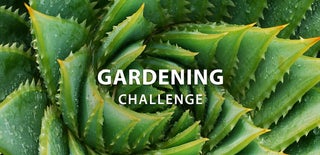Introduction: Tensegrity Planter
The topic of this Ible is a planter.
What is a planter, a container for a plant or small tree and the use in this instance it will be for a small plant.
However, its not to be any ordinary planter this one will make use of symmetry and tensegrity.
Tensegrity derived from tension and integrity, in that the integrity of the structure is derived from the balance of tension not compression
The planter will be formed from two identical 3D printed elements either of which can be used to display the plant but only one at a time simply by rotation.
The project was featured on the cover ofMake: Magazine, Volume 78
Supplies
3D Printer
Filament - PLA
Brass wire 0.4mm diameter.
M2.5/10mm screws - Qty 10
Sanding paper - various grades.
Wire Wool.
Needle file
Wire Cutters.
Clear 2 part epoxy Resin
Step 1: Design
In designing the planter consideration had to be given to a number of factors.
1: It had to be capable of supporting and displaying a suitably sized plant.
2: Designed to be capable of being 3D printed.
3: Symmetrical to allow tensegrity.
4: Separate liner to isolate the plant & soil from the supported element to prevent damage due to moisture and minerals in the soil marring the structure.
5: Attachment points.
The original design started life as a dual stepped pyramid with additional changes to create the suspension overlap and the extending of the first step to create a platform to balance the structure.
Step 2: Printing - Planter
Due to the size of each of the two required elements they had to be printed individually.
The original model required scaling 400% for the required final size of 161.3 x 100 x 96 mm.
Balancing size and time the following settings were applied.
Layer Height - 0.15mm
Infill Pattern - Tri Hexagon
Infill Density - 30%
Base Adhesion - Brim
Filament Type - PLA
Filament used - 39.32m
Filament weight - 117g
Print time was 13 Hrs 43 Mins
As there are two of these elements making up the complete planter that's a total of 27 Hrs 26 Mins.
Step 3: Printing - Liner
The Liner is what the plant will actually sit in, in the planter.
As a separate element it helps to protect the main structure from the effects of moisture and minerals that will be present in the soil.
Being separate it makes maintenance of the plant easier.
It also allows maintenance of the planter by allowing the plant to be removed to prevent interference for adjusting or cleaning.
As a result the liner was printed in black where the effects of any discolouration should they occur would be less noticeable
100% infill was applied to make it more water and mineral resistant.
Print settings for the liner also scaled 400%
Layer Height = 0.15mm
Infill Pattern - Tri Hexagon
Infill Density - 100%
Base Adhesion - Brim Filament
Filament Type - PLA
Filament length - 10.14m
Filament weight - 30g
Print time was 3 Hrs 25 Mins
Step 4: Post Processing
Post processing was applied following printing.
This was to remove the brim and any rough edges with sanding paper
Similarly the base of the platform which can also serve as the top required some sanding to reduce the print surface striations.
Do not apply to much pressure or use too rough a grade of sanding paper as you may inadvertently expose the infill pattern and/or create deep scratches that are difficult to remove.
Use progressively finer paper finishing with wire wool to add a sheen.
Polishing methods may be applied as required.
For the liner a polished surface was not a requirement, however roughening of the inner surface was.
As an aid to water and mineral repelling the inner surface of the liner would be coated with a layer of clear epoxy resin. To which 2 layers were applied with a cure time of 12 Hrs for each layer.
Surface roughening was to improve the epoxy resin adhesion.
Once the epoxy resin has dried, fill with water and check for any leaks
If any holes are found these can be filled in with epoxy filler prior to use.
Step 5: Assembly
Once all the sanding, polishing and liner preparation is complete, its time for the assembly.
Five lengths of wire are required 1 short (~110mm) and 4 long (~200mm each).
Starting with the suspension points at the apex of the pyramid form.
File a small notch at one point in the circumference of both holes in the apex.
Thread the short wire through the hole in the apex allowing 3cm and fit an M2.5 screw, this will grip the wire and retain the screw in the hole wrap the excess around the bottom of the screw head.
Allow 5cm of suspension and repeat the same process on the other end.
Repeat the same process with the eight holes at the corners using the long wires taking care to retain equal tension on each.
Placing a spirit level on the platform will help in balancing the structure.
Step 6: Plant
Due to the size of the liner, populate this with a slow growing plant, succulent or cactus for example.
As the liner has no holes do not over water the plant as it may damage the liner and/or plant.
Put the plant in the liner and fill with soil, add a little water if necessary to keep the plant moist, do not over water.
Place the liner in to the planter.
Step 7: Display
Now assembly is complete it's time to display the work.
The print files can be downloaded from YouMagine

First Prize in the
Gardening Challenge













